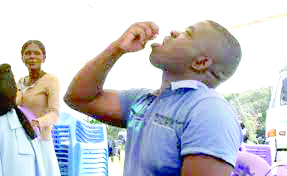Kenya in serious threat of cholera outbreak – WHO

The World Health Organisation (WHO) has singled out Kenya as among the Horn of Africa countries facing a serious threat of cholera outbreaks.
According to the latest cholera situation report, in the region in the Horn known as dubbed ‘the Mandera Triangle’ — which covers Kenya, Ethiopia and Somalia — at least 1,000 cases of cholera are reported each week.
WHO says in Kenya 11,835 had been confirmed by July 13 in addition to 194 deaths. On average, about 100 new cases are reported each week, including from newly affected areas, says the report.
In response to the ongoing cholera outbreaks, the Ministry of Health has taken decisive action by initiating a comprehensive Oral Cholera Vaccination campaign.
Mary Muriuki, the Principal Secretary for Public Health and Professional Standards, emphasised the urgency of intervention as the cholera situation continues to escalate.
By July 18, Kenya had reported a staggering 11,181 cholera cases and 196 fatalities in 26 counties. The Case Fatality Rate (CFR) stands at 1.7 per cent, underscoring the gravity of the situation and the critical need for prompt action.
The successful first round of vaccination conducted in February 2023 saw 2.2 million people above the age of 1 vaccinated in Nairobi, Garissa, Tana River, and Wajir, resulting in a significant reduction in cholera cases in those areas.
Building on this progress, the International Coordinating Group (ICG) has provided the Ministry of Health with 1,533,199 doses of the Oral Cholera Vaccine for the upcoming campaign.
The vaccination drive will focus on the eight most-affected counties, including Homa Bay (Suba South), Kajiado (Kajiado East), Marsabit (Moyale), Nairobi (Kamukunji and Embakasi Central), Wajir (Wajir North), Mandera (Mandera East), Machakos, and Garissa.
Muriuki emphasized the importance of additional preventive and promotional interventions to complement vaccination efforts.
The Ministry of Health has strengthened coordination activities, water, sanitation, and hygiene efforts, risk communication networks, community engagement, patient case management, and laboratory confirmation of cases in collaboration with county governments, line ministries, and partners.












